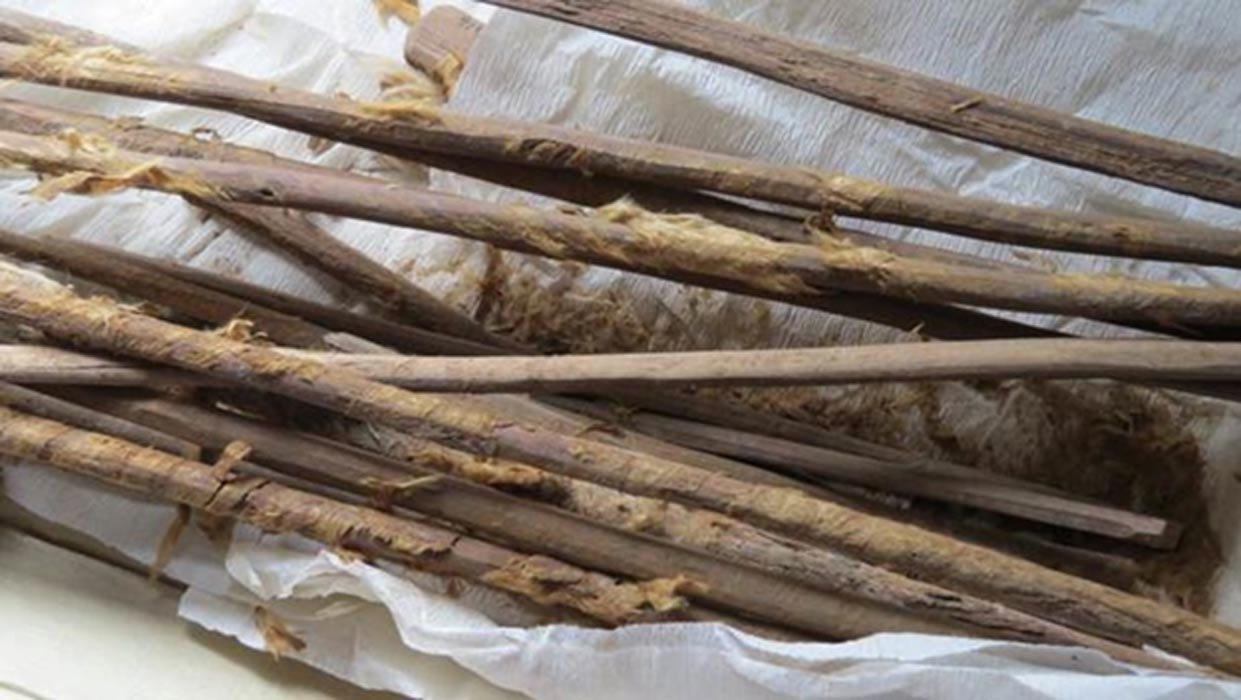2,000-Year-Old Feces from the Silk Road Reveal Spread of Infectious Diseases
Once travelled by famous historical figures such as Marco Polo and Genghis Khan, the Silk Road was a hugely important network of transport routes connecting eastern China with Central Asia, the Middle East and Europe. It came to prominence during the Chinese Han Dynasty (202 BC to AD 220) and remained a key transport route for the following 2,000 years.
Given that the Silk Road was a melting pot of people, it is no wonder that researchers have suggested that it might have been responsible for the spread of diseases such as bubonic plague, anthrax and leprosy between China and Europe. However, no one has yet found any evidence to show how diseases in eastern China reached Europe. Travellers might have spread these diseases taking a southerly route via India and the Middle East, or a northerly route via Mongolia and Russia.
- 100 Merchants Retrace Silk Road Trade Route on Camelback in Epic Year-Long Journey
- New Project seeks World Heritage status for Ancient Silk Road

Caravan on the Silk Road, 1380 (public domain)
But our team, including researchers at the University of Cambridge and China’s Academy of Social Sciences and Gansu Institute for Cultural Relics and Archaeology, has now found the earliest evidence for the spread of infectious disease organisms along the Silk Road. The results have been published in the Journal of Archaeological Science Reports.

Extent of Silk Route/Silk Road. Red is land route and the blue is the sea/water route. (Public Domain)
We investigated latrines at the Xuanquanzhi relay station, a fortified stopping point along the Silk Road that was built in 111 BC and used until 109 AD. It is located at Dunhuang, at the eastern end of the Tamrin Basin, an arid region that contacts the fearsome Taklamakan Desert. When the latrines were excavated, the archaeologists found sticks with cloth wrapped around one end (see lead image). These have been described in ancient Chinese texts of the period as a personal hygiene tool for wiping the anus after going to the toilet. Some of the cloth had a dark solid material still adhered to it after all this time.
Feces under the microscope
We realised that this material was feces when we looked at it with a high-powered optical microscope. We also found the eggs of four species of parasitic intestinal worms in it. This may seem surprising but the eggs of many species of intestinal worms are very tough and may survive thousands of years in the ground. This indicates that some of the people using this latrine 2,000 years ago were infected with parasites. The species included roundworm (Ascaris lumbricoides), whipworm (Trichuris trichiura), Taenia sp. tapeworm (likely T. solium, T. asiatica or T. solium) and Chinese liver fluke (Clonorchis sinensis).
Roundworm and whipworm are parasites found right across the world in the past and indicate poor personal hygiene, as the worms are spread by the contamination of food and hands by human faeces. Taenia sp. tapeworm is spread by eating raw or undercooked meat such as pork and beef, and again has been found across large areas of the world in the past.
Meanwhile, Chinese liver fluke – which can cause abdominal pain, diarrhoea, jaundice and liver cancer – is only found in regions of eastern and southern China and Korea, as it has a complex life cycle. It is restricted to areas with wet marshy countryside, as the parasite must pass through the intermediate hosts of a water snail and freshwater fish before it can infect humans. The humans have to eat the fish raw if it is to infect them. In modern times, the closest area to Dunhuang where Chinese liver fluke is found is 1,500km away, and the region where most cases of infection are found is 2,000km away.

Egg of Chinese liver fluke discovered in the latrine at Xuanquanzhi, viewed using microscopy. Dimensions 29 x 16 micrometers. The Journal of Archaeological Science (CC BY 4.0)
Discovering evidence for Chinese liver fluke at a latrine in the arid region of Dunhuang was really exciting. The parasite could not possibly be endemic in that region as there are no marshy areas needed for its life cycle. Instead, it shows that a person who became infected with the liver fluke in eastern or southern China was able to travel the huge distance to this relay station along the Silk Road – at least 1,500km (932 miles).
- Recent Textile Discovered in Nepal Sheds Light on How Far South the Silk Road Actually Extended
- DNA Suggests Yiddish Began on the Silk Road
- 1,700-year-old Silk Road cemetery contains carvings of the four mythological symbols of China
Our finding suggests that we now know for sure that the Silk Road was responsible for spreading infectious diseases in ancient times. This makes more likely previous proposals that bubonic plague, leprosy and anthrax could also have been spread along it.
Top image: Personal ‘hygiene sticks’ used in toilets on the Silk Road. Hui-Yuan Yeh. Reproduced from the Journal of Archaeological Science: Reports, (CC BY-SA 4.0)
The article ‘How we discovered infectious diseases in 2,000-year-old faeces from the Silk Road’ by Piers Mitchell was originally published on The Conversation and has been republished under a Creative Commons license.

















